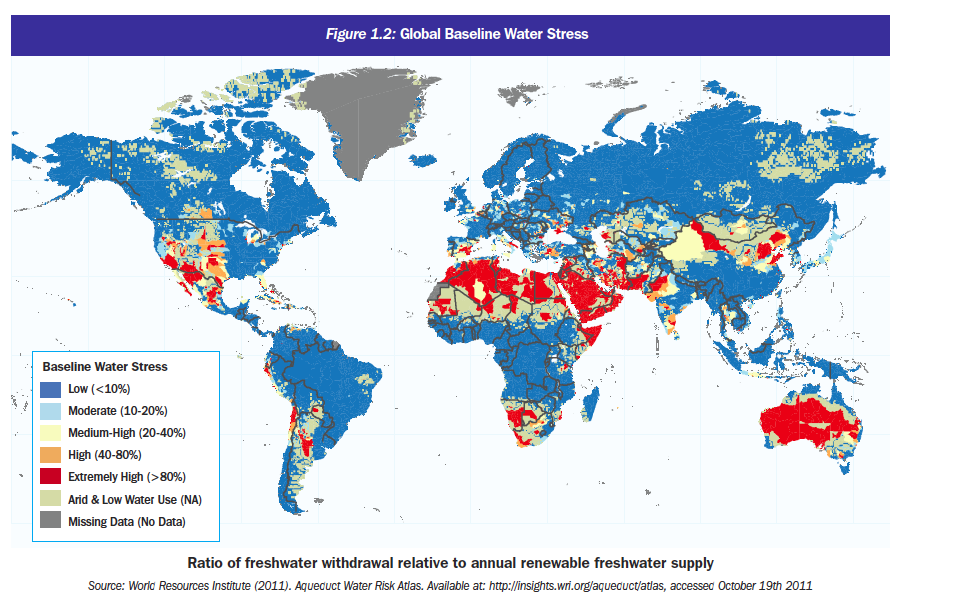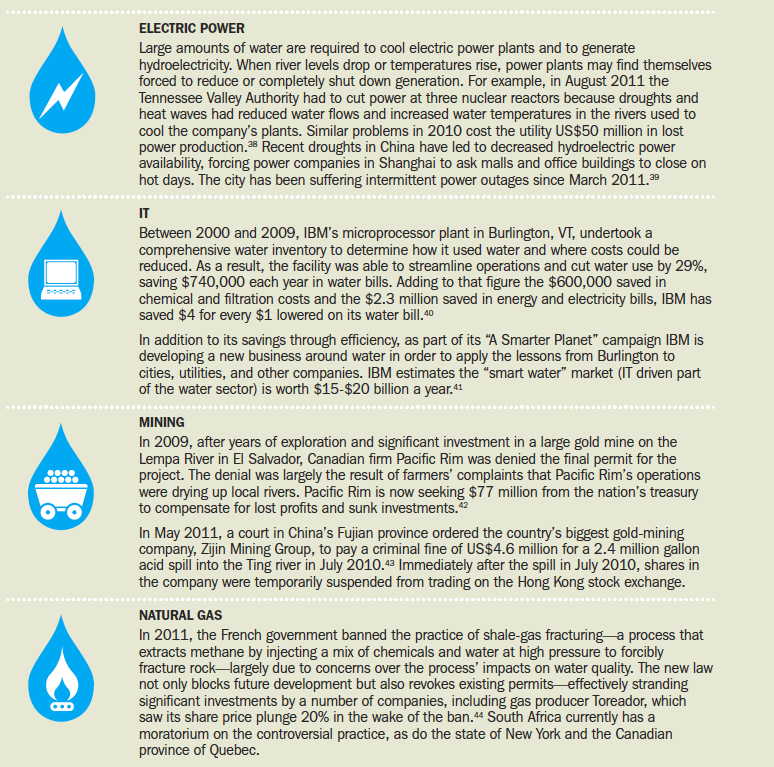CERES
WHY WORRY ABOUT WATER?
Pressure is mounting on the world’s freshwater resources, both through increasing demand and supply degradation. These pressures will continue to increase in the years ahead as population growth, rapid industrialization and land-use change create more water demands for food, fiber, and energy production—all as climate change is bringing additional stress on global freshwater supplies.
Even with accelerated investment in efficiency and improved water resource management, many countries and continents are on course to suffer major freshwater deficits in the next two decades A recent study led by McKinsey estimates that by 2030 global water demand will outpace supply by 40 percent (Figure 1.1). This shortfall will hit all corners of the world, including the southwest United States, Australia, Africa and East and Southeast Asia. Asia’s water risks are especially troublesome due to its vast population and economic growth (Figure 1.2). Investors, who have been sinking large amounts of capital into the region, should be especially sensitive to this trend.
The rising global population (estimated to grow from seven to nine billion by mid-century) together with economic growth in emerging markets will mean burgeoning demand for both potable water and food. Agriculture now accounts for roughly 70 percent of global water use, but as dietary changes in developing countries raise demand for water-intensive foods such as meat and dairy, this proportion will grow yet higher. Without efficiency gains, agricultural water demand is expected to grow by 45 percent by 2030—or an additional annual 1,400 m3 of water per year.
Increasing water demand by the power and energy sectors is another growing competitive pressure. Many forms of electric power require massive amounts of water for cooling, with the sector accounting for 41 percent of total water withdrawals in the United States and 44 percent in the European Union. The water intensity of fuel production is also on the rise. In 2009, only five percent of the world’s liquid fuels came from water-intensive “unconventional” sources such as biofuels, oil sands and shale oil. By 2035, the U.S. Energy Information Administration predicts, that number could double or even triple, depending on global oil prices.
…
Texas & Oklahoma, USA
2011
In the summer of 2011, Texas and Oklahoma suffered the worst drought conditions seen since the Dust Bowl. In Midland, the oil and gas capital of West Texas, less than 1/10th of an inch of rain fell between October 2010 and April 2011, leaving all three of the city’s reservoirs less than 30% full. Without rain, residents may have to raise US$140 million for a new pipeline to bring in water from elsewhere. Estimates put the cost of the drought and associated wildfires (including agricultural and livestock losses) at US$5 billion.
Download full version (PDF): The Ceres Aqua Gauge
About Ceres
www.ceres.org
“Ceres (pronounced “series”) is a national network of investors, environmental organizations and other public interest groups working with companies and investors to address sustainability challenges such as global climate change.”
Tags: Aqua Gauge, Ceres, Corporate, OK, Oklahoma, Risk Management, Texas, TX








 RSS Feed
RSS Feed